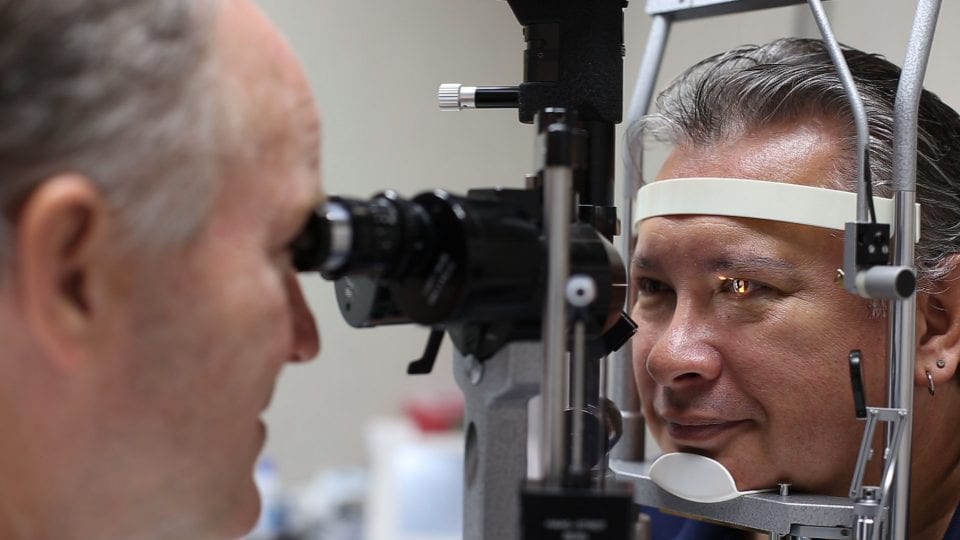
Types of Vision Problems
The National Consumer Advisory Board named, cataract, cornea and LASIK specialist, Dr. Neil B. Griffin one of America’s Best Physicians 2021-2026. Leading cataract, cornea and LASIK specialist, Dr. Sarah E. Griffin has been selected as a member of The American European Congress of Ophthalmic Surgery. This Society meets in the US and Europe – to evaluate new developments in technology, surgical techniques, clinical studies, and progressive patient care. .
Myopia
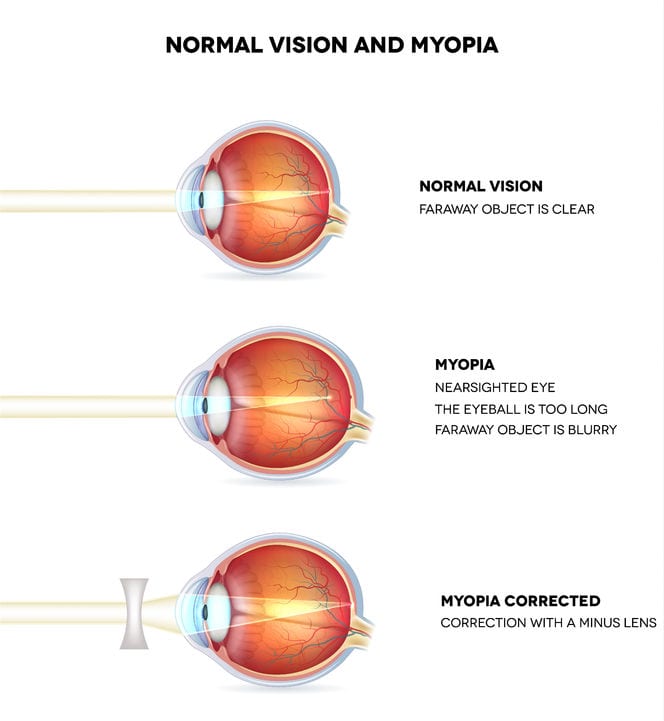
One of the most common vision problems is Myopia. More than 70 million people in North America (about one in four) are myopic (nearsighted). The term “nearsighted” means that you can see objects that are closer to you more clearly than distant objects. The more myopic you are the more blurred distant objects appear. If you have a highly myopic prescription, you are likely to have very thick edges to your glasses.
Myopia (Nearsightedness) occurs when your eye is too long in relation to the curvature of your cornea. This causes light rays entering the eye to focus in front of the retina, producing a blurred image.
Below are the categories of severity for myopia:
- Mild Myopia < -3.00 diopters
- Moderate Myopia -3.00 to -6.00 diopters
- Severe Myopia -6.00 to -9.00 diopters
- Extreme Myopia > -9.00 diopters
Hyperopia
Hyperopia (farsightedness) occurs when your eye is too short in relation to the curvature of your cornea. With hyperopia vision problems, distant objects are seen more clearly than near objects.
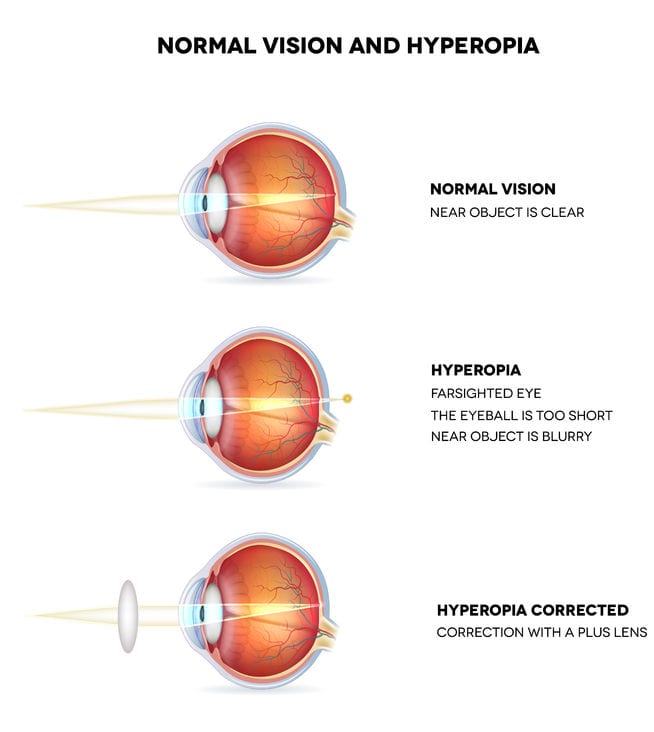
In hyperopia, light rays entering your eye are not bent enough and never come into focus on the retina, producing a blurred image. “Farsighted” is not an accurate term. Patients with hyperopia can use their focusing muscles to pull the image forward onto the retina, allowing them to see clearly. They can only maintain clear vision by constantly engaging the focusing muscles which causes eye strain and headaches. Mildly hyperopic (farsighted) patients tend to see very well until the lens inside the eye loses its flexibility around 40 years of age. Many people cannot overcome the effects of severe hyperopia and need glasses for both distance vision and for reading.
Below are the categories of severity for hyperopia:
- Mild Hyperopia < +2.00 diopters
- Moderate Hyperopia +2.00 to +4.00 diopters
- Severe Hyperopia +4.00 to +6.00 diopters
- Extreme Hyperopia > +6.00 diopters
Astigmatism
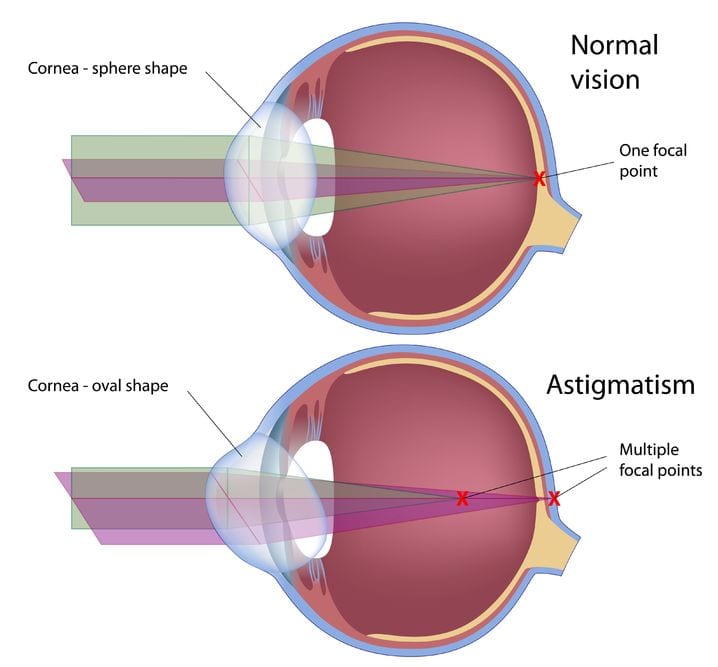
Astigmatism occurs when your cornea is shaped like an egg. With astigmatism vision problems, more than one focal point within the eye distorts what you see. As a result, you experience a tilting of images due to the unequal bending of light rays entering your eyes.
Many patients with myopia and hyperopia have some degree of astigmatism, or an oval shape, to their cornea. People with high degrees of astigmatism have blurred vision for both near and distant objects.
Below are the categories of severity for astigmatism:
- Mild Astigmatism < 1.00 diopters
- Moderate Astigmatism 1.00 to 2.00 diopters
- Severe Astigmatism 2.00 to 3.00 diopters
- Extreme Astigmatism > 3.00 diopters
Presbyopia
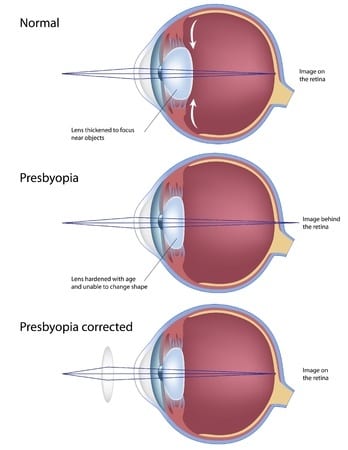
Presbyopia is a normal part of aging that becomes more apparent as people approach their 40s and 50s. As the human body ages, the lens inside the eye grows like rings on a tree. It loses its elasticity, and therefore its ability to easily change focus, making it more difficult to read smaller print. Because LASIK and other forms of laser vision correction do not affect the lens of your eye, they cannot correct this problem.
Nearsighted people who become presbyopic may require bifocals in their forties, and those who never needed glasses before may need reading glasses.
Mild myopia counteracts presbyopia, which is why patients who are slightly myopic with presbyopia may still be able to read when they remove their glasses. LASIK surgery can treat myopia, but patients may need reading glasses for fine print to correct their presbyopia.
For more information on the eye anatomy visit the American Academy of Ophthalmology.